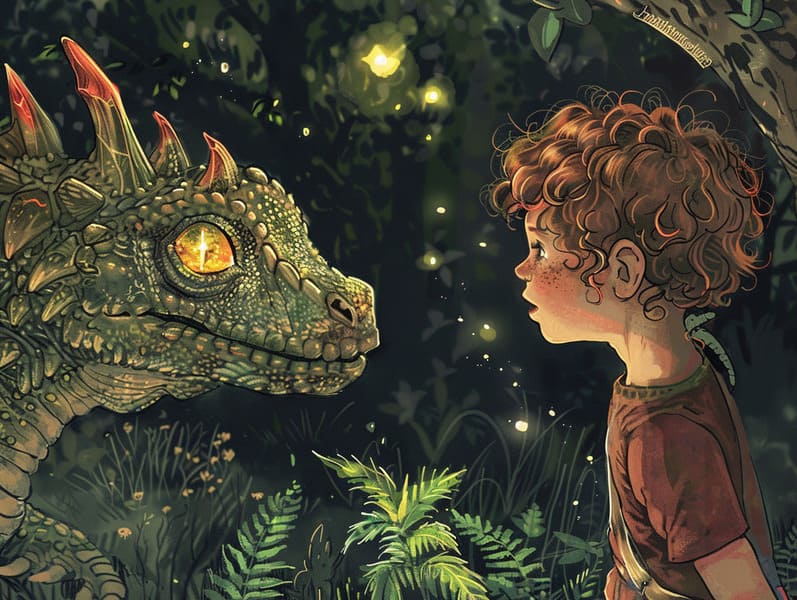
Famous fairy tales have ancient roots. These tales have been spoken from one generation to the next centuries before they were ever recorded. They came from a variety of traditions, including Asian traditions. They were initially passed along among older generations, often carrying themes and messages concerning the societal norms and beliefs of the time.
The Grimm brothers, Jacob and Wilhelm, were among the first to compile and publish many of these beloved fairy tales. Their compilation, "Grimm's Story Collection," included tales like "Ashenputtel," "The Bread Crumb Trail," and "Schneewittchen," which have since become classics in the world of beloved fairy tales. Similarly, Andersen's magical fairy tales, such as "The Mermaid," and "The Duckling's Story," have stolen hearts worldwide, ensuring their place in the pantheon of famous fairy tales.
Even though they are old, these tales remain as applicable as ever, especially as children's bedtime stories. These delightful tales are now available in diverse formats, including richly illustrated books, whimsical animations, and free fairy tales online.
Their unwavering allure can be connected to several delightful features:
Valuable Lessons: Traditional fairy tales often offer important moral lessons. Narratives like "The Story of the Boy Who Cried Wolf" teach the merit of truthfulness, while "The Race of the Tortoise and the Hare" highlight the traits of tenacity and modesty. These narratives offer little ones clear distinctions between moral and immoral, forming their moral compass in a mild yet profound way.
Compassion and Insight: Fairy tales frequently showcase heroines facing difficulties and adversities, prompting readers to identify with their struggles and cheer for their triumphs. For instance, "Beauty and Her Beast" reveals the significance of seeing beyond looks to acknowledge the inner core of a individual, building sympathy and perception.
Cultural Insights: Many fairy tales are rooted in the cultural contexts from which they blossomed. Reading these tales can provide informative snapshots into different historical contexts, nurturing a sense of world insight and discernment.
Creativity and Imagination: The fantastical elements in classic fairy tales—wizardry and magic—spark children’s creative dreams. These tales lead readers to imaginary realms, activating fantasy ideas and a sense of wonder that endures a lifetime.
Ancient fairy tales are not only bewitching but also illuminating. They function as whimsical tools in strengthening various mental and emotional abilities in young readers. When ancient fairy tales are spoken, they boost verbal skills by teaching new lexicon and elaborate sentence structures. This practice also strengthens hearing perception and attentiveness, as young ones remain attentive, anticipating to see what happens next.
Furthermore, discussing the themes and characters of old fairy tales can strengthen intellectual skills and logical thinking. Young ones are guided to notice patterns, predict happenings, and figure out cause and effect. These conversations also contribute to young ones communicate their thoughts and feelings, strengthening their emotional intelligence.
In today’s read more electronic age, the prevalence of online fairy tales has made these stories more obtainable than ever. Internet sites and online apps feature large libraries of ancient fairy tales that can be viewed or heard anytime, anywhere. Fairy tales read aloud are particularly prevalent, supplying an engaging way for the young to experience these spellbinding stories. Read-aloud books and read-out-loud videos transport characters and settings to life, often joined by charming audio effects and melodies that augment the storytelling journey.
The persistent attraction of classic fairy tales lies in their ability to modify to contemporary times while keeping hold of their central messages. Contemporary updates of these narratives often include more representative protagonists and modern settings, making them accessible to today’s audience. However, the central morals of gallantry, benevolence, and justness remain unchanged, continuing to influence readers of all ages.
Old fairy tales also offer a sense of familiarity and comprehensibility. They bring a coherent narrative with a clear beginning, middle, and end, often wrapping up with the conclusion of conflicts and the triumph of goodness over badness. This foreseeability can be solacing for little ones, giving a sense of steadfastness in an inconstant world.
Ancient fairy tales continue to fascinate and enlighten new generations, maintaining their beauty and meaningfulness in modern society. As nighttime stories for kids, they put forth a perfect blend of charm and understanding, developing moral values, empathy, and creativity. The existence of web-based fairy tales and the well-liked nature of fairy tales read out loud warrant that these timeless fairy tales remain acquirable to new generations.
By defending and broadcasting these fairy tales, we continue to laud the rich tapestry of human imagination and cultural heritage. Whether you are exploring a artistically illustrated book, discovering a online library, or listening to an sound book, the allure of popular fairy tales is always within reach. These stories remind us of the consistent power of storytelling and its ability to unite us across epochs and places.
If you are perusing a artistically illustrated book, perusing a cyber collection, or listening on an audio story, the magic of old fairy tales is always within reach.
These stories convey of the everlasting effect of storytelling and its ability to draw us together across epochs and places, creating a bond that captivates and teaches alike.
Comments on “Uncovering the Past of Short Fairy Tales and Their Unceasing Attraction.”